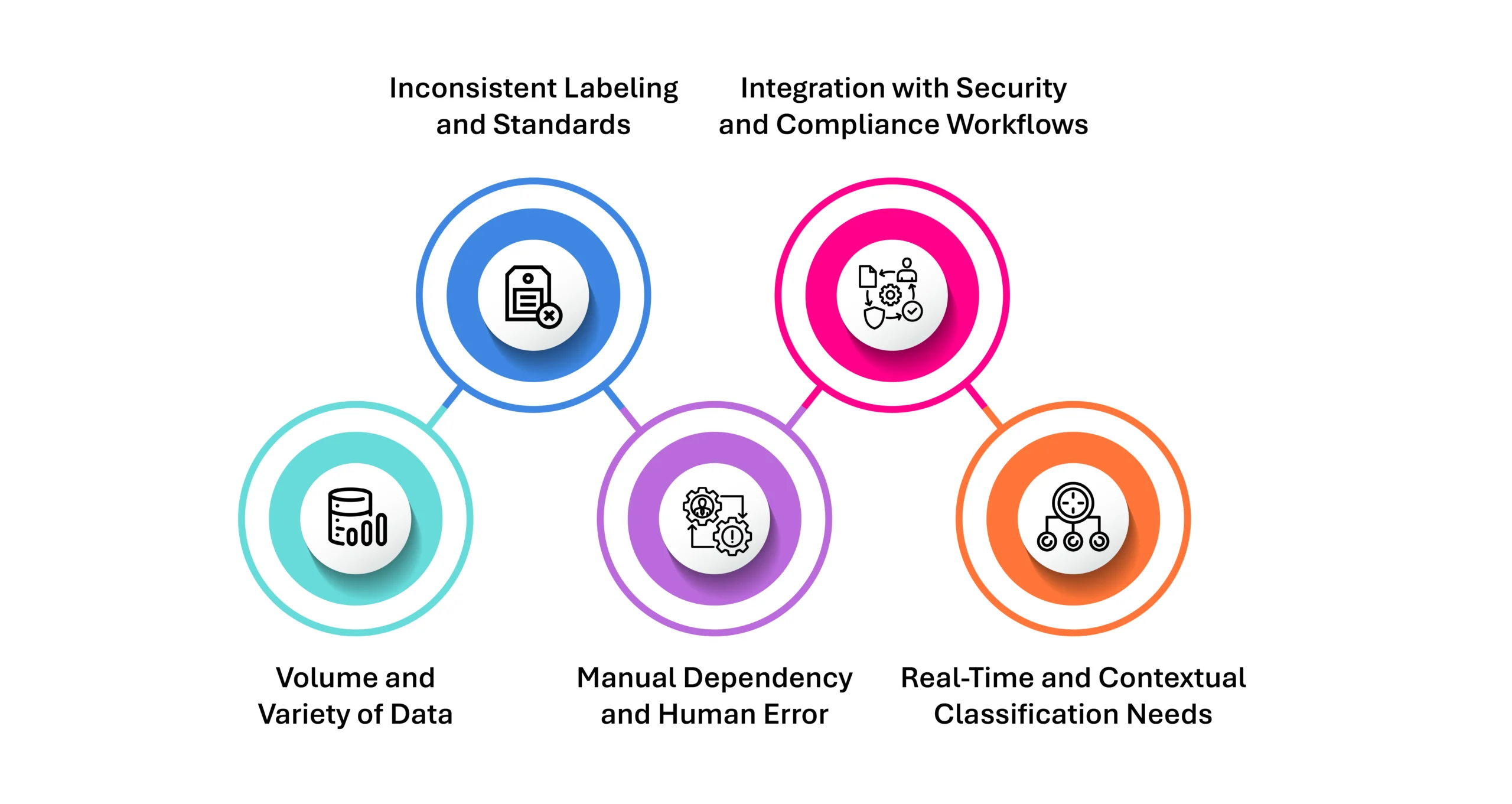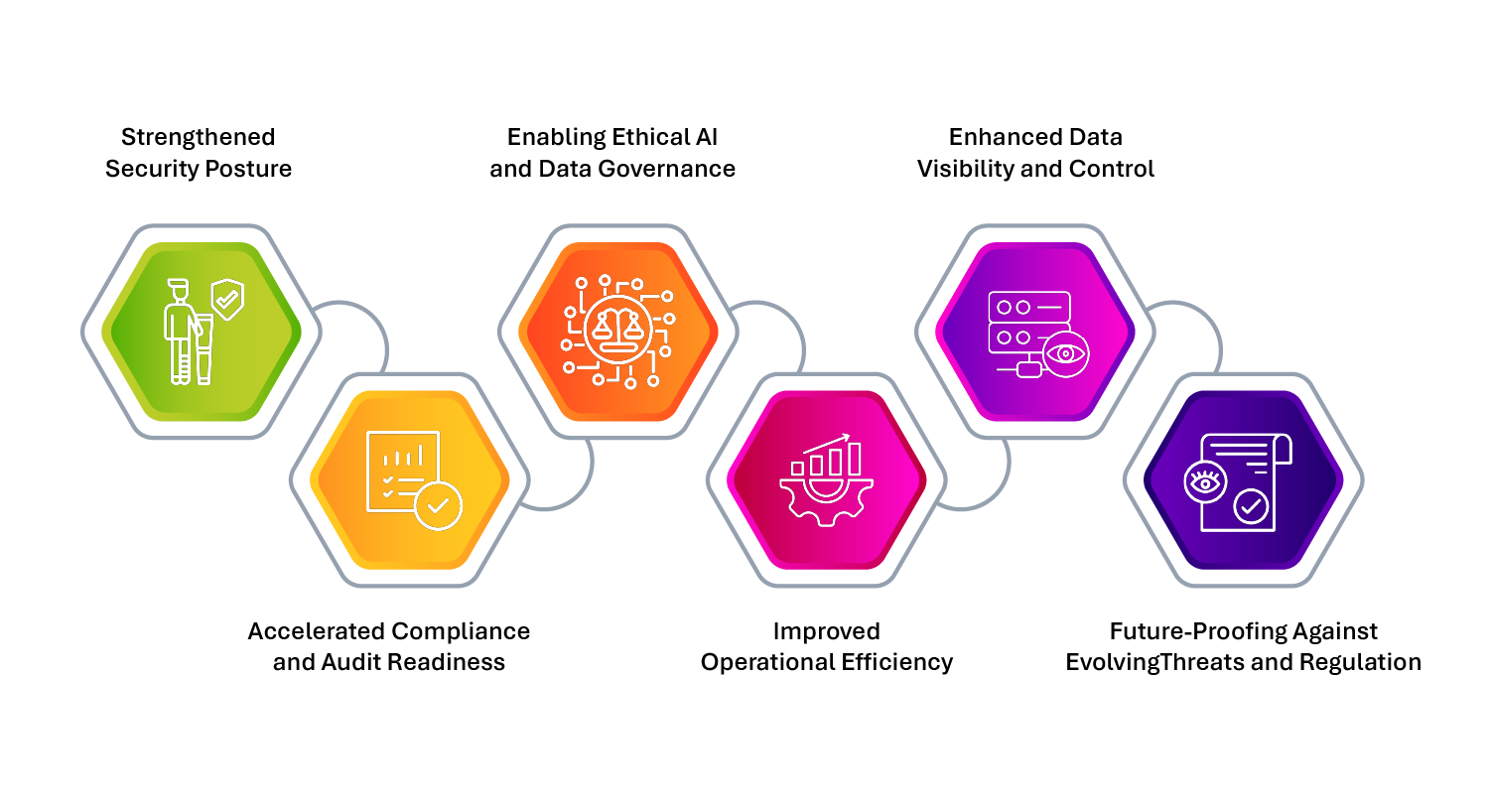What is Data Classification?
Data classification is the process of organizing data into predefined categories based on its type, sensitivity, and value to the organization. It acts as a foundational step in data governance, enabling organizations to apply appropriate security controls, manage compliance requirements, and improve data lifecycle management.
In a world where data is being created at an exponential pace, much of it unstructured, classification provides clarity. It helps enterprises answer essential questions: What data do we have? Where is it stored? Who should access it? And how should it be protected?
Why Data Classification Matters
Enterprises today operate in data-rich environments, but that richness often comes with risk. Without classification, sensitive information like personally identifiable information (PII), intellectual property, or financial records can remain buried and unprotected—creating vulnerabilities in both security and compliance.
According to Gartner, by 2026, organizations that automate sensitive data discovery and classification will reduce privacy-related incidents by 80%. Effective data classification empowers better decision-making, risk management, and resource allocation, enabling teams to act on data based on its value and risk profile.
Challenges in Data Classification

While data classification is essential, it’s far from simple, especially in large enterprises managing petabytes of structured and unstructured data across on-prem and cloud environments.
- Volume and Variety of Data: Data comes in many formats—emails, PDFs, videos, logs, source code, databases—and not all are easily classifiable using traditional rules-based methods. The complexity increases with unstructured data, which often lacks predefined schemas.
- Inconsistent Labeling and Standards: Without enterprise-wide classification policies or automation, different teams may apply labels inconsistently or not at all. This can lead to redundant, contradictory, or outdated tags that degrade trust in metadata.
- Manual Dependency and Human Error: Relying on manual classification is not only time-consuming but also prone to mistakes. Employees may incorrectly label sensitive information or overlook critical context, leading to inaccurate risk assessments.
- Integration with Security and Compliance Workflows: Data classification doesn’t live in a vacuum. For it to be actionable, it must integrate with access control systems, DLP tools, and regulatory reporting. Without seamless integration, classification becomes a static tag instead of a dynamic enabler.
- Real-Time and Contextual Classification Needs: Static classification can’t keep pace with data that evolves—documents shared, files edited, or permissions changed. Enterprises need AI- and ML-driven tools that adapt classifications dynamically based on context and usage patterns.
The Dual Mandate: Powering AI and Meeting Regulatory Demands with Data Classification
In today’s digital economy, data classification is no longer just a backend IT function—it’s a frontline enabler of AI readiness and regulatory resilience.
AI models are only as good as the data that feeds them. Without clear classification, enterprises risk training algorithms on outdated, redundant, or sensitive information, leading to biased outcomes, ethical breaches, and compliance violations. Classification brings clarity to chaos, separating high-fidelity data from ROT (redundant, obsolete, trivial) content and ensuring that only governed, contextualized datasets are used in AI pipelines.
Simultaneously, regulatory frameworks like GDPR, HIPAA, CCPA, and India’s DPDP Act have made data transparency and accountability non-negotiable. Enterprises must know exactly what data they hold, where it resides, who can access it, and how it’s being used. Classification is the first step toward delivering on those mandates, enabling real-time data governance, breach impact analysis, and lawful processing.
In a multi-cloud, multi-regulatory world, policy-driven data classification becomes a bridge between innovation and compliance, allowing organizations to move fast without breaking rules. It’s not just a box to check—it’s a control tower for ethical, intelligent, and secure data operations.
Strategic Benefits of Data Classification

Data classification is not just a compliance checkbox—it’s the cornerstone of a secure, intelligent, and accountable data strategy.
- Strengthened Security Posture: By identifying and tagging sensitive information, organizations can apply tailored controls, such as encryption, access restrictions, or monitoring, based on classification level, reducing exposure and insider threats.
- Accelerated Compliance and Audit Readiness: Classified data simplifies mapping against regulatory requirements, making audits faster and reducing the cost of non-compliance. Classification helps trigger automatic workflows for retention, archiving, or redaction.
- Enabling Ethical AI and Data Governance: Classification supports responsible AI by ensuring only high-quality, non-sensitive, and bias-free data is used in model training. It aligns with data governance goals by clarifying ownership, lineage, and usage.
- Improved Operational Efficiency: Knowing what data is critical—and what is redundant or obsolete—allows for smarter storage tiering, cost savings, and improved searchability, especially in large-scale environments.
- Enhanced Data Visibility and Control: Classification creates a structured map of the organization’s data landscape. This visibility is crucial for decentralized data ownership, enabling teams to make informed decisions based on risk and value.
- Future-Proofing Against Evolving Threats and Regulations: As data privacy laws and cyber threats evolve, classified data can be adapted to new rules through dynamic policy enforcement, helping organizations stay ahead of the curve.
Data classification is more than metadata—it’s metadata with meaning. In an age of AI, automation, and escalating cyber risk, it provides the clarity, control, and confidence enterprises need to transform data from a liability into a strategic asset.
Getting Started with Data Dynamics:
- Learn about Unstructured Data Management
- Schedule a demo with our team
- Read the latest blog: AI, Ethics, and Compliance: The Next Frontier in Global AI Leadership






